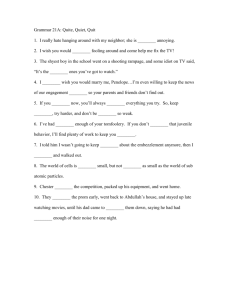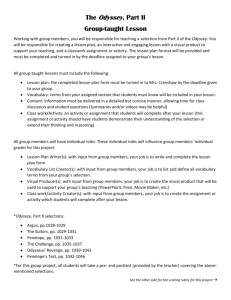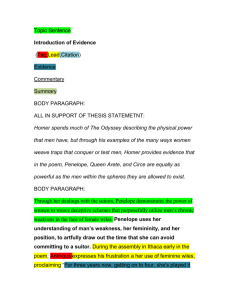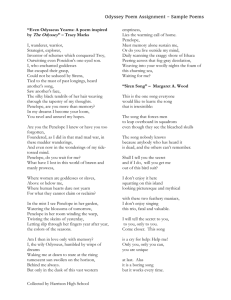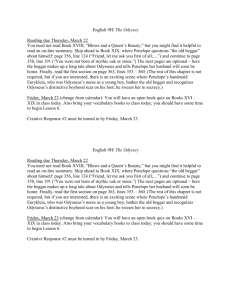DATING DANGER - Hrsbstaff.ednet.ns.ca
advertisement
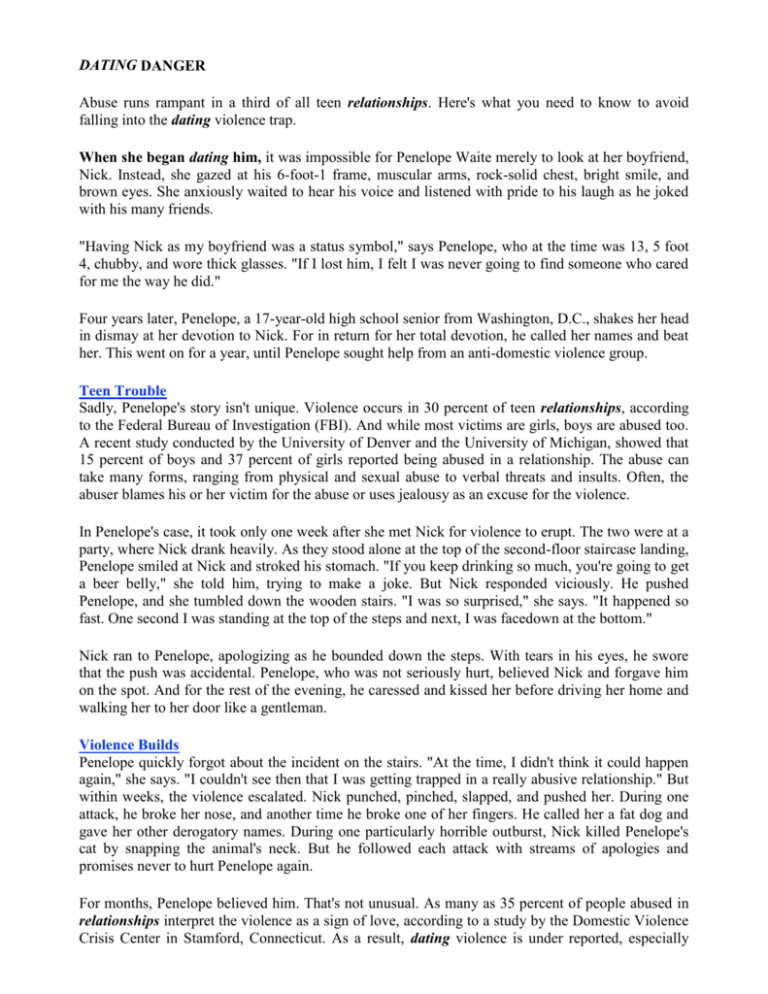
DATING DANGER Abuse runs rampant in a third of all teen relationships. Here's what you need to know to avoid falling into the dating violence trap. When she began dating him, it was impossible for Penelope Waite merely to look at her boyfriend, Nick. Instead, she gazed at his 6-foot-1 frame, muscular arms, rock-solid chest, bright smile, and brown eyes. She anxiously waited to hear his voice and listened with pride to his laugh as he joked with his many friends. "Having Nick as my boyfriend was a status symbol," says Penelope, who at the time was 13, 5 foot 4, chubby, and wore thick glasses. "If I lost him, I felt I was never going to find someone who cared for me the way he did." Four years later, Penelope, a 17-year-old high school senior from Washington, D.C., shakes her head in dismay at her devotion to Nick. For in return for her total devotion, he called her names and beat her. This went on for a year, until Penelope sought help from an anti-domestic violence group. Teen Trouble Sadly, Penelope's story isn't unique. Violence occurs in 30 percent of teen relationships, according to the Federal Bureau of Investigation (FBI). And while most victims are girls, boys are abused too. A recent study conducted by the University of Denver and the University of Michigan, showed that 15 percent of boys and 37 percent of girls reported being abused in a relationship. The abuse can take many forms, ranging from physical and sexual abuse to verbal threats and insults. Often, the abuser blames his or her victim for the abuse or uses jealousy as an excuse for the violence. In Penelope's case, it took only one week after she met Nick for violence to erupt. The two were at a party, where Nick drank heavily. As they stood alone at the top of the second-floor staircase landing, Penelope smiled at Nick and stroked his stomach. "If you keep drinking so much, you're going to get a beer belly," she told him, trying to make a joke. But Nick responded viciously. He pushed Penelope, and she tumbled down the wooden stairs. "I was so surprised," she says. "It happened so fast. One second I was standing at the top of the steps and next, I was facedown at the bottom." Nick ran to Penelope, apologizing as he bounded down the steps. With tears in his eyes, he swore that the push was accidental. Penelope, who was not seriously hurt, believed Nick and forgave him on the spot. And for the rest of the evening, he caressed and kissed her before driving her home and walking her to her door like a gentleman. Violence Builds Penelope quickly forgot about the incident on the stairs. "At the time, I didn't think it could happen again," she says. "I couldn't see then that I was getting trapped in a really abusive relationship." But within weeks, the violence escalated. Nick punched, pinched, slapped, and pushed her. During one attack, he broke her nose, and another time he broke one of her fingers. He called her a fat dog and gave her other derogatory names. During one particularly horrible outburst, Nick killed Penelope's cat by snapping the animal's neck. But he followed each attack with streams of apologies and promises never to hurt Penelope again. For months, Penelope believed him. That's not unusual. As many as 35 percent of people abused in relationships interpret the violence as a sign of love, according to a study by the Domestic Violence Crisis Center in Stamford, Connecticut. As a result, dating violence is under reported, especially when teens are involved. "Teens don't have a lot of experience in relationships, so they may not be aware that they are in an abusive relationship," says Susan Delaney, education coordinator at the Domestic Violence Crisis Center. "Many don't tell anyone what is happening to them because they feel trapped, embarrassed, ashamed, or they don't want to get their partner in trouble." Nick's attacks made Penelope very fearful of him. But she was even more afraid to confront him about the abuse because she thought that the attacks would get worse. She also believed that she needed to resolve the situation herself. "If I told someone else about the abuse, that meant I couldn't manage my life," she says. "I couldn't handle being me." Full of conflicting emotions of love and fear for Nick combined with shame for allowing the beatings to go on, Penelope tried to pretend her life was normal. She told her parents that She broke her nose and finger playing volleyball. She hid her bruises. Finally, Nick's problems with drugs opened the door for her escape. A year after the abuse began, Nick, who had abused drugs throughout their relationship, got sent to a rehabilitation facility. During his absence, Penelope worked up the courage to seek help, and she got it from the Women Advocates to Terminate Sexism, an anti-domestic-violence group based in Washington, D.C. Once in counseling, Penelope learned that the abuse wasn't her fault and that others shared her predicament. "I felt relieved that I wasn't the only one caught in this trap," Penelope says. Seeking Help Domestic violence-experts applaud Penelope's actions. It's vital to seek help, and the best place to start is to talk to an adult the victim trusts, such as a parent, teacher, nurse, or coach. "Teens who find themselves in an abusive relationship have to reach out to others to find safety," Delaney says. "If they don't, the abuse will only get worse and they could get seriously hurt or even lose their lives." Besides seeking help, it's important to know that victims are not responsible for the abuse they receive. Often, an abuser will blame his or her victims for the abuse. We've all heard phrases such as "You made me do it," "You pressed my buttons," or "You've got to learn who's the boss." But victims are never responsible for the abuse they receive. The abuser is always responsible. Remember also that abuse can take many forms. Calling someone names, destroying a person's property, stating at someone menacingly, preventing a person from talking to others, and threatening to harm someone are all forms of abuse. And, of course, hitting someone is abuse, even if it happens only once. If someone is abusing you, get help. If you know someone who's in an abusive relationship, get help for him or her. Teen health centers, battered women's shelters, or telephone crisis lines can all help you or your friend get out of the relationship. But as Penelope discovered, these places can't help if the person being abused doesn't act. "People can tell you to get out of a bad relationship, but you've got to get out of it yourself," she says. "You have to realize that abuse belittles. It makes you feel less than human. like you're just something to be used and thrown away. If you allow yourself to be abused, then you're not really living." By Stacey Pamela Patton Scholastic Choices; May2001
